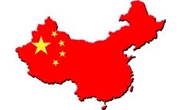Government/Policy

November 4, 2018
Leibowitz: Dispatch from the U.S.-China Trade War Front
Written by Tim Triplett
Trade attorney and Steel Market Update contributor Lewis Leibowitz offers the following update on events in Washington:
Commentators and administration officials have filled the airwaves with speculation about the future course of the U.S.-China “trade war” over the last few weeks. Today, I provide a brief assessment of where this might be going.
Memories of Lenin’s Tomb
“Kremlinology” was very much in vogue during the Cold War. Reporters and commentators would take stock of the relative position of Soviet leaders at Lenin’s tomb during the May Day parade, for example. Some leaders might be missing from the picture altogether—others may have moved down the line, increasing the distance from the Party Chairman or Premier. Speculation is the child of a lack of real information.
I was reminded of those days by the reporting of the last 10 days on the upcoming G-20 meeting in Argentina. President Trump and President Xi Jinping of China will meet at that conference at the end of November. Will there be a deal at that meeting to ease the tensions caused by the U.S.-China “trade war?” The run-up to the G-20 gives ample opportunities for latter-day Kremlinologists to speculate.
Run-up to the G-20 Meeting
The annual APEC summit meeting took place this weekend in Port Moresby, the capital of Papua New Guinea (PNG). China’s President for Life Xi Jinping appeared at the conference and spoke in defense of China’s position and course of action. He sharply criticized the United States for imposing tariffs that, in his view, threatened to unravel the global trading system. His speech did not reveal any imminent progress toward a deal.
Vice President Mike Pence (President Trump did not attend the APEC meeting) gave a very firm speech, saying that the current tariffs affecting about half of U.S. imports from China would remain until the alleged Chinese abuses of the global trading system (forced technology transfer, intellectual property theft, investment restrictions) were addressed. Again, there was nothing in the vice president’s speech that indicated a prompt resolution of the tariff issues was at hand. In fact, the vice president literally doubled down on tariffs, pointing out that half of U.S. imports from China by value were not yet subject to tariffs.
Peter Navarro, the president’s Director of Trade and Manufacturing Policy, spoke last week at the Center for Strategic and International Studies. He laid out his view of the China policy and its consequences. He portrayed the China-U.S. trade conflict as something like a life-and-death struggled between two different visions of global future. The talk was controversial, including a description of Wall Street investment bankers visiting China as “unpaid foreign agents.” Dr. Navarro certainly did not predict an imminent deal.
Later Tuesday, Larry Kudlow, the president’s chief economic advisor (and therefore on a higher level than Dr. Navarro) sharply criticized the latter’s CSIS speech. He said Dr. Navarro’s comments were “way off base” and did not reflect the president’s thinking or plans of action. According to Mr. Kudlow, Navarro “was freelancing and he’s not representing the president or the administration.” Perhaps Mr. Kudlow thinks some sort of compromise on tariffs is around the corner.
All this provides background for the president’s statements over the last two weeks about meeting with Xi next week. A meeting without a firm conclusion would not be unprecedented, of course (witness the summit meeting with Kim Jong Un), but the fact of a meeting automatically generates speculation about possible progress. When conciliation is in the air, the stock market sighs with pleasure as a general rule.
The president predicted a deal, without going into detail, on Nov. 2. After the election results, which were not a vindication of the Trump administration, speculation revived about a deal with China. In an interview on Friday, President Trump suggested that the G-20 meeting with President Xi would be a “good meeting.” Rumor has it that Peter Navarro will not participate in the meetings in Argentina.
My purpose is not to add to the speculation—it is to say that the decision of whether to reduce the friction with China or increase it is a close-run thing right now. If Kudlow is up and Navarro is down, that suggests conciliation. But recall that, just a few months ago, Gary Kohn appeared to be ascendant over Dr. Navarro, delaying the Section 232 tariffs on steel and aluminum. That situation did not last, as events have shown.
Looking at objective events may be a better way to predict the future. The state of the U.S. economy is very good, which leads trade hawks to say that the tariffs are not hurting the U.S. nearly as much as free-traders and affected businesses claim. However, the effects of the tariffs are cumulative, and maintaining them over a long period of time (let’s say, into the 2020 election season or beyond) will likely affect the economy increasing. Businesses will relocate their production to avoid the sting of the tariffs. Once they leave the U.S., they are unlikely to return for a long time.
Lewis Leibowitz
The Law Office of Lewis E. Leibowitz
1400 16th Street, N.W.
Suite 350
Washington, D.C. 20036
Phone: (202) 776-1142
Fax: (202) 861-2924
Cell: (202) 250-1551






